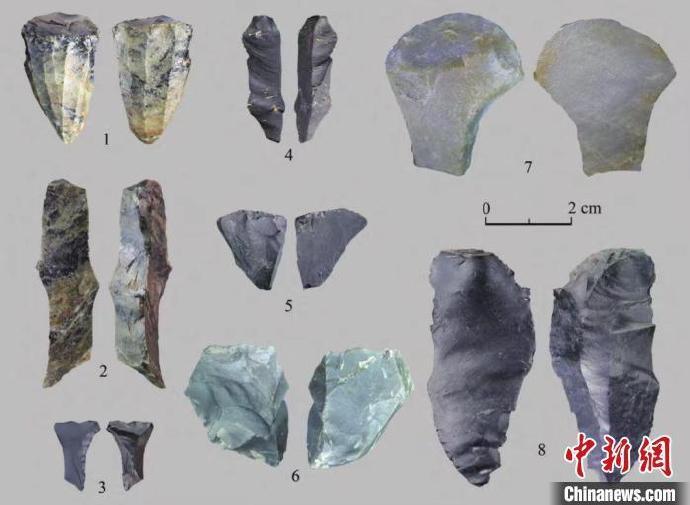Preservation and restoration efforts transform ancient town into a thriving tourist destination

Nestled along the banks of the Yellow River, a picturesque ancient village Qikou, which was one of the most prosperous settlements in North China's Shanxi Province, offers breathtaking beauty to visitors. The village, with its traditional architecture nestled amidst rolling hills, exudes an aura of tranquility and timelessness. Travelers from all over the world pass through the ancient town, coming to experience the unique culture of the Yellow River Basin and the picturesque beauty of the ancient villages with distinctive northern characteristics.
In the past, the Yellow River played a crucial role as a transportation route for goods between northern and southern China. To ensure the efficient operation of this transportation system, Qikou emerged as a significant trading port. Merchants would anchor their ships at Qikou and then transfer their goods onto camel or horse-drawn caravans for further transportation over land. Qikou gained prominence during the Ming (1368-1644) and Qing (1644-1912) dynasties, earning a reputation as one of the Yellow River's most significant ports.
Booming tourism
In recent years, with the enhanced efforts in cultural preservation, governments at all levels have continuously increased investment in the restoration and protection of historical buildings and ancient residences in Qikou, promoting the integrated development of culture and tourism, making it reborn as a "living ancient town." Ancient buildings such as escort agencies, pawnshops, and warehouses tell the story of the town's past prosperity.
Tourists from all over the country flock to the town, allowing the local people to benefit from the booming tourism relying on the unique culture and ecology of the Yellow River.
The locals, with their warm hospitality, proudly share stories of their ancestors who relied on the Yellow River, known as the "Mother River" of China, for their livelihoods. The name "Qikou," roughly translates to mean "moraine" or "a rock in shallow water." The stone walls, weathered by time, stand as a testament to the resilience of the people who called this place home.
In order to protect them from flooding, many of local houses, known as "yaodongs" or "loess cave houses," have been physically carved into the steep hillside along the banks of the Yellow River.
On a slope that stretches for hundreds of meters and is inclined at about 40 degrees, there are rows of cave dwellings arranged in layers, which are both scattered and unique in their own ways. Rock erosion over the years has created a form of beautiful "modern art."
Located about 10 kilometers south of Qikou, the small village of Lijiashan is renowned for its myriad of over 400 yaodongs carved into the cliff-face of Lijia Mountain.
The Global Times has learned that during this year's Golden Week holidays in October, Qikou was a hot destination for domestic travelers, with a daily flow of people exceeding 10,000. The scenic area has also launched traditional folk agricultural cultural performances with hundreds of participants, showcasing scenes of threshing, winnowing, and transplanting, vividly showing the hardworking and agricultural spirit of their ancestors.
"The ancient village here truly showcases the local folk customs, all of which originate from agricultural culture and the most primitive farming life. This is very attractive and novel for visitors from the south, allowing us to experience the charm of the Yellow River," a tourist surnamed Liang from East China's Jiangsu Province who came to Qikou on November 2 for sightseeing told the Global Times.
Caves turned to studios
Nowadays, the authentic Lijiashan village is attracting more visitors as villagers have transformed their idle cave dwellings into art bases, art studios, and art exhibition halls, creating a renowned art creation base both domestically and internationally, forming the brand of the village. They have also utilized vacant houses to develop rural tourism and accommodation industries, seizing the opportunity of rural tourism and expanding their income channels.
The 62-year-old villager Yang Yanmei often uses her spare time as a tour guide to walk on the paths of Lijiashan and telling stories of past generations. As a fan of traditional opera, she and her husband enjoy spontaneously singing Shanxi opera or local traditional melody adapted from local stories. She always wears a sincere and sanguine smile, impressing tourists with her simplicity and humor.
Chen Yuxiang, 58, who lives in the east of village, wears a white headscarf and a green floral jacket, basking in the warm sun while sitting under the eaves and picking coriander, perfectly harmonizing with the yellow earth behind her.
In 2022, the cheerful Chen started using her mobile phone to record her rural life with her husband - farming, cooking, and showcasing various authentic and unique Shanxi cuisine. She has over 200,000 followers on short video platforms.
Chen showcases her joyful life to tourists with a humorous tone and rich expressions, which earns her a lot applause. People are amazed by the resilience and optimism that have been passed down through generations on the lady living on the Loess Plateau.
71-year-old villager Li Yuecheng leads his donkey through Qikou's ancient town while singing local folk songs. He decorates his donkey and offers it to tourists for rides during the low season for agricultural production.
His powerful and vivid performance while singing folk songs always attracts a crowd. Village officials jokingly say that Li has earned a lot of money in the tourism industry with these skills over the years.
Tour guides, guesthouse owners, restaurant owners, performers... more and more villagers have gained "new identities" by relying on the mountains and rivers. Some like Yang have even moved back to their ancestral homes on the mountains from the town, hoping to live a better and bustling life through tourism.
The recovery of the tourism industry benefits largely from the local government's significant investment in protection of the area. In recent years, local authorities have carried out protection and restoration of historical buildings and ancient dwellings in the Qikou ancient town.
Today the ancient town has become a popular tourist attraction. More than 5,000 people out of a population of about 30,000 in the town are engaged in the tourism industry.







